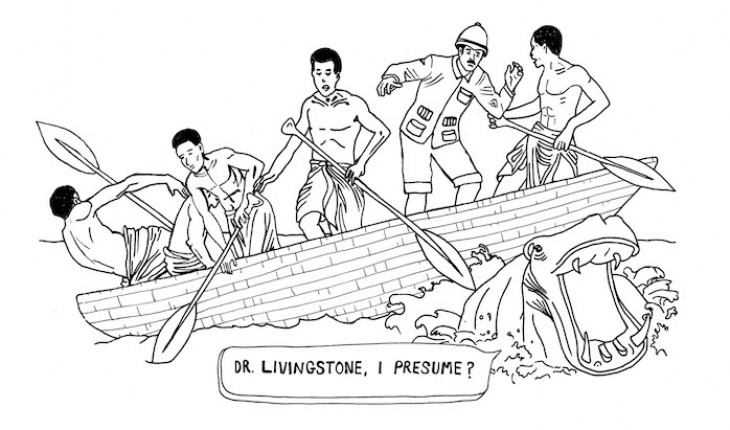Can you tell me a little about your own background?
I was first introduced to the Eye Hospital of St John by my grandfather in 1985, who was a colleague and friend of the Hospitaller at the time, Sir Steven Miller. The Order accepted my student elective application and I spent a month in Jerusalem observing the Hospital and its work, and assisting where possible.
These were formative experiences, and, after qualification, I returned to the hospital for a full year. The purpose was to conduct a research doctorate into the genetics of a systemic autoimmunevasculitis called Behҫet’s syndrome (also known as the ‘Silk Road disease’), this being particularly prevalent in countries distributed along the ancient trading routes between China and the Mediterranean basin.
With no known cause or cure, the most severe form of ocular disease typically affects young adults, and unfortunately is relatively common in the Middle East. I subsequently returned to Amman in Jordan to complete the genetics study, where part of this research was based, and to Jerusalem for working visits.
What is the history to the work of the St John Eye Hospital?
St John serves the Palestinian people in East Jerusalem and in the occupied territories, these stretching from Tulkarem in the north[1] to Rafa in the southern reaches of Gaza[2] (Figure 1). This Eastern region of the Mediterraneanhas been periodically unstable since the end of the British mandate period in 1948, and has chequered cultural history shared by all three of monotheistic religions, and which continues to underlie much of the social and political unrest there. All of these elements – medicine, history, culture, and modern politics – were appealing to me as a young student, and still are. But the history of the Order of the Hospitaller Knights, and their commitment to providing medical care in the Eastern Kingdom and subsequent ports andisland bases as they withdrew westwards (these including Acre, Rhodes, Bodrum, Sicily, and Malta), is of great interest. A monastic Order which provided medical care from 1023[3]until the capture of Malta in 1798 by Napoleanis, by any standards, an achievement. Although European branches of the Order survived uninterrupted, the British Order was dissolved during the reformation in 1564 [4]. But the extraordinary achievement of the Hospitallers was not forgotten, and, doubtless unaware of the profound influence she would exert in the region, Queen Victoria issued a new Royal Charter to the Order in 1888, thus rekindling the spirit of the Hospitallers in the Latin East. With trachoma being one of the greatest causes of blindness at the time (previously known as the ‘Mesopotamian scourge’ in 2000BC, and the ‘Egyptian Ophthalmia’ which blighted soldiers in the Napoleonic campaigns in the late 18th century), it was decided to build an eye hospital in Jerusalem. While the medieval hospital had stood in the Muristan[5]of the Old City, in 1882 a new hospital was built the on Hebron Road opposite Mount Zion, this moving briefly to Watson House and Strathearn House between 1949 and 1960. With increasing clinical demand, in 1960 it was rebuilt in its present location in Sheikh Jarrah in East Jerusalem (Figure 2).
What services does the St John Eye Hospital Group provide?
St John provides comprehensive ophthalmic facilities to all peoples of East Jerusalem and the West Bank and Gaza. Its doors are open to all, although practically all patients are Palestinians, and most are close to, or below, the poverty line. The total catchment population numbers over 4.3 million, of which about 1.2 million people live in refugee camps in the west Bank and the Gaza strip, and the vast majority are dependenton international aid. The Hospital Group is formed of the main hospital in Jerusalem, a smaller St John unit in Anabta in the north, the Hebron clinic in the south, and a clinic in Gaza city. Plans to build a new self-contained hospital in Gaza are well underway, with an independent hospital in this area being essential to the future of eye care across the occupied territories given the vicissitudes of travel between Gaza and Israel.
The Hospital group provides treatment for all forms of eye disease, including childhood disorders such as cataract and squint, a 24 hour service for all medical and surgical emergencies (such as facial and globe injuries), corneal and external eye disease expertise (allergic eye disease and acquired corneal disorders and injuries being particularly common), treatment for all retinal disorders (with a dedicated retinal treatment suite), including diabetic eye disease, cataract (figure 3), and glaucoma services, to name but a few. With the nursing school of St John within the Jerusalem hospital, diagnostic facilities, on-site pharmacy, theatre suites in Jerusalem and Anabta, and in-house bioengineering support services (and all provided with local expertise) the Hospital is equipped to deal with the high ophthalmic work in this population.
Why is this work so important?
For various reasons, both congenital and acquired eye disease amongst Palestinians is high, with the rate of blindness being ten-fold higher than in developed countries. In 2012, over 110,000 eye patients were treated by St John across its four main sites and mobile outreach clinics, this being over double the number in 2006. Almost one third of the population is under the age of ten (figure 4), with the incidence of squint, infantile glaucoma, cataract and traumabeing higher in this group than in other Mediterranean countries. Among adults, cataract, glaucoma and the complications of diabetes are blinding conditions, with severe diabetic retinopathy typically occurring at afar younger age than in the UK. One in eight of the population are diabetic, and the risk of irreversible blindness, when controlled for other factors, is increased 25-fold. Contributing influences include a carbohydrate-rich diet, lack of awareness of the condition (and therefore late presentation), and, until recently, no effective diabetic screening program. However, on this point St John now has funding for the first such program, due to begin in 2014. Unfortunately, in many cases, the disease can at best be stabilised; at worst vision is irreversibly lost due to retinal ischaemia or detachment. Although there are other eye units in the West Bank, somewell-staffed with adequate funding streams, only the St John group has a full complement of facilities to deal with virtually all elective and emergent ophthalmic disease. In recognition of such comprehensive facilities and the standard of care offered, in 2012 St John Eye Hospital was awarded international accreditation by the US-based ‘Joint Commission’ for quality and patient safety, this being a significant milestone both for the Hospital Order, and the Palestinian healthcare system. Thus, with the financial support of the EU (to the value of €2.4M) and the backing of the WHO, the St John Hospital group is now a full member of the World Association for Eye Hospitals, truly an achievement for the Order and all of its staff.
Can you describe some anecdotes which underlines the important work it undertakes?
I recall numerous patients from my year spent there in 1993, and the four or so working visits since. Although many come to mind, some stand out. I shall always remember an elegant Bedouin lady in her 50’s who was brought to the Jerusalem clinic with a progressive, disfiguring neurofibroma involving her eyelids and upper face. For most of her adult life she had worn a shawl to cover face, both at home and in society generally. With the expertise of a senior visiting surgeon from England (Figure 5) she underwent a five-hour operation to remove this lesion and reconstruct her eyelids and face. Now she faces the world with a new confidence.
On one visit, I met a mother who had arrived carrying her little boy who had a rapidly progressive tumour behind the eye. Her journey to the hospital took two days on foot but eventually she found a way through the desert hills and around the blockades, and arrived exhausted and desperate. Her child, Yaeish, had all the characteristics of a potentially lethal and rapidly growing tumour, a rhabdomyosarcoma, behind the eyeball. With all the skills of the nurses, anaesthetists and surgeons, the boy underwent urgent excision of the tumour with preservation of the eye and eyelids (Figure 6). Requiring general medical investigations and systemic chemotherapy, his care was transferred to the Hadassah oncology department where he received successful state-of-the-art treatment for this life threatening disease.
On another occasion I was involved in the care of a two-year-old child with congenital glaucoma. His eye had become distended and opaque due to a build-up of pressure (so-called ‘buphthalmos’ or ‘ox eye’) and his sight could not be recovered. He underwent surgery with removal of the inner coats of the eye and reconstruction of the socket, allowing him to wear an artificial eye, and, I hope – now some 6 years later – to go to school with confidence and be successful, despite having only one good eye. There are too many other patients to recount, each with their own story, but my overarching recollection of the work at St John is that patients are seen and managed with great professionalism and expertise, with a high standard of care and attention.
Are your doctors at risk?
The short answer is that the risk of living and working in Jerusalem is probably no different to living in certain parts of London or any other large city. So long as sensible precautions are taken, the perceived risk of working at St John (being just that, perceived but not real) should not discourage potential visitors. Perhaps the only occasions when I felt at risk (and these occurring during my visit as a medical student with no family responsibilities!) was when I found myself locked in the Old City (Figure 7) after dark one evening, and on another occasion when confronted alone in a dry wadi near Jericho – on both occasions the mention of the Hospital in the most basic Arabic immediately diffused the situation. I should say that I have also travelled extensively in Israel (i.e.outside the West Bank, and with good colleagues and friends in Tel Aviv and elsewhere) and again encountered no specific danger.
Does the hospital engage in politics?
The Hospital Group’s chief aim is to provide eye care to those who are either uninsured, or to those too poor to cover all their medical costs. It has good relations with the Israeli authorities and has forged strong links with the Israeli Hospitals and Israeli medical colleagues. Thus, although it does not engage in politics per se, its work involves crossing the political ‘divide’ on a daily basis, and most consider that this work has a small but significant stabilising influence in this very unstable region.
[1] ‘TurKarma’ is located in the foothills of the Samarian mountains, and is known for the fertility of the region and its vineyards. In Aramaic (טורכרמא), Tulkaremmeans “mount of vineyards”.
[2]‘Rafah’, also known as ‘Rafiah’, is located in the southern Gaza Strip. Rafah’s population of ~72,000 is largely formed of refugees.
[3] Considered to be the date that the first Hospital was established in Jerusalem. The Hospitallers became associated with a hospital in the Muristan district founded by early Italian merchants fromAmalfi and Salerno, which was then dedicated to St John the Baptist by Blessed Gerard Thom. Thearms of the Amalfi traders formed the basis of the now familiar eight-pointed St John cross.
[4]During the Dissolution of the Monasteries between 1536 and 1541, the Order was actively suppressed by King Henry VIII. Although it was restored Queen Mary I in 1557, its estates were once again confiscated in 1559 by Queen Elizabeth I. The Order effectively fell into abeyance in 1564.
[5] ‘Muristan’ itself is derived from the Persian Bimarestan (بیمارستان ) meaning ‘Hospital’. In the Islamic world, ‘Bimaristan’ referred a hospital where the ill were cared for by qualified staff.
- The St John Eye Hospital Group – History, aims and ambitions - 6th March 2016







